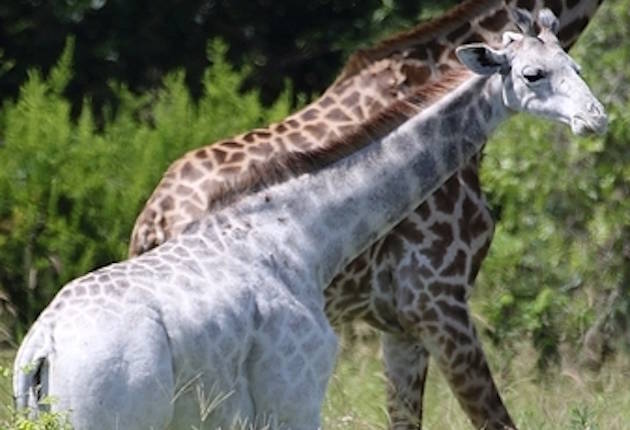Omo, the leucistic giraffe. (Photos by the Wild Nature Institute)
Pigmentation problems usually get wild animals killed because they make the individuals more noticeable to predators, standing out from their environments and failing to blend into a herd of their peers. Omo, a female leucistic giraffe, has defied the odds and survived 15 months with her striking coloration.
Omo lives in Tanzania’s Tarangire National Park. The Wild Nature Institute photographed her Jan. 17, 2015, when she was a very young calf. The cover image for this article was taken Jan. 16, 2016, and shows her seemingly healthy and accepted in the herd.

Omo as a young calf in 2015.
Leucism can affect a variety of animals, from fish to reptiles to birds. Cells are incapable of creating pigments, leaving animals partially or completely white depending on the number of cells affected (e.g., piebald deer). Omo is only partially leucistic; her lower legs and the hair along her neck are colored like an average giraffe, and she is pale instead of solid white.
The likelihood of leucism in a population varies widely, with even offspring of the same parents varying between normal and leucistic.
Leucism is not, as many casual observers believe, albinism. Albinism is the failure of cells to produce enough melanin, whereas leucism is the total absence of pigment. Albinos also have the characteristic reddish/pink eyes from their underlying blood vessels showing through. Leucistic animals typically have normal eye colors.
The giraffe was named “Omo” by a local lodge guide for her rare coloration, though WNI is asking for alternative suggestions. Omo is a popular brand of detergent in Tanzania.

